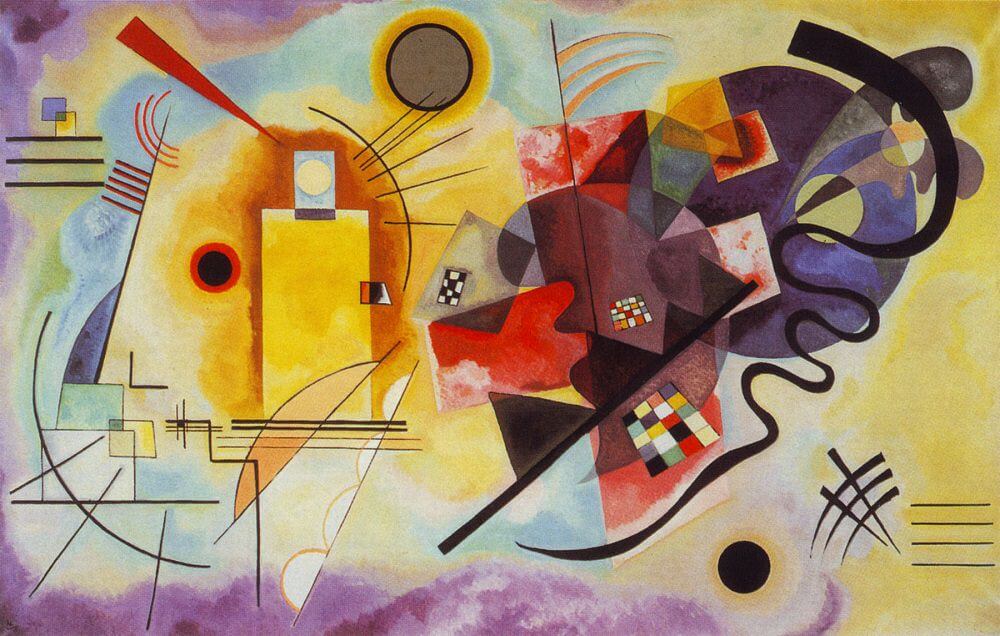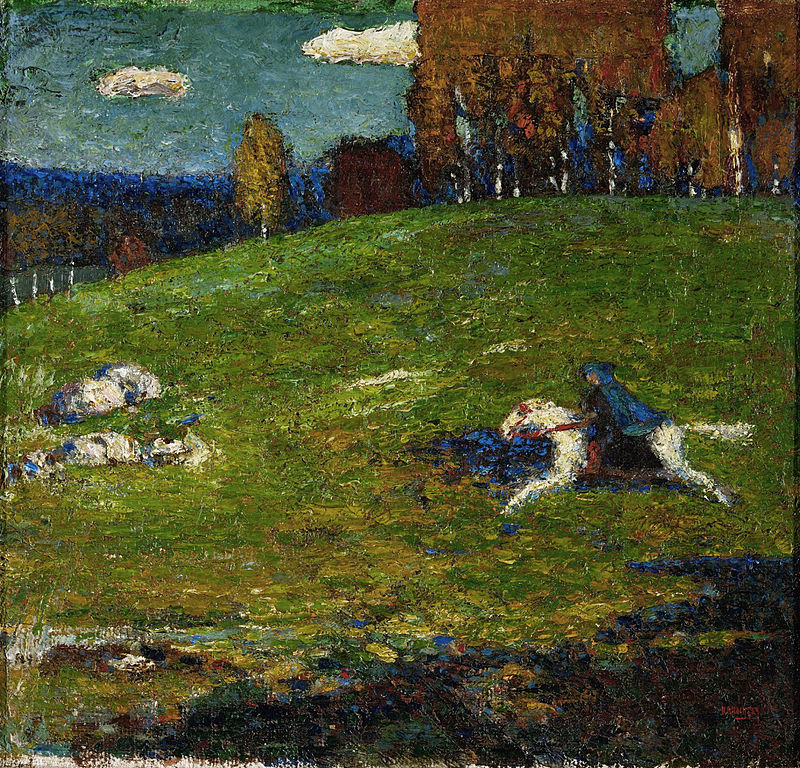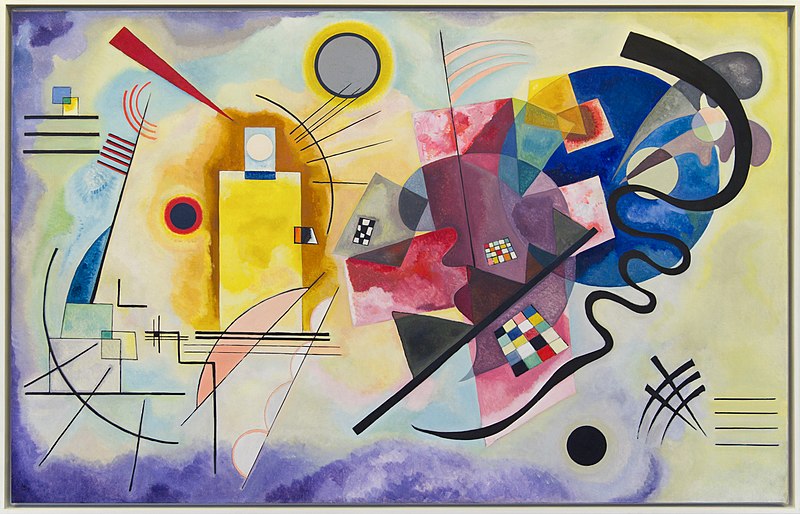
Walissy Kandinsky, Yellow, Red and Blue, oil on canvas (1925) Georges Pompidou Center, Paris,
Historical Context:
In the tumultuous landscape of early 20th-century Europe, Kandinsky emerged as a leading proponent of abstract art, advocating for the liberation of art from representational constraints. Influenced by movements such as Expressionism and Theosophy, Kandinsky developed a unique visual language characterized by dynamic shapes and intense colors, laying the groundwork for “Yellow, Red, Blue 1925.”
Formal Analysis:
“Yellow, Red Blue 1925” exemplifies Kandinsky’s mastery of form and color. The composition pulsates with geometric shapes and intersecting lines, creating a sense of rhythmic harmony. The juxtaposition of primary colors—yellow, red and blue—intensifies the painting’s emotional impact, inviting viewers into a realm of pure abstraction.
Symbolism and Meaning:
Central to Kandinsky’s artistic philosophy was the belief in the spiritual power of color and form. In “Yellow, Red, Blue 1925,” each hue carries symbolic significance: red evokes passion and vitality, yellow represents joy and enlightenment, and blue conveys depth and introspection. The dynamic interplay between these colors suggests a visual symphony, inviting viewers to contemplate the deeper essence of existence.
Critical Reception:
Art historians and critics have offered diverse interpretations of “Yellow, Red, Blue 1925.” Some view the painting as a celebration of pure abstraction, while others interpret it as a manifestation of Kandinsky’s synesthetic experiences. Regardless of the interpretation, scholars acknowledge its profound impact on the development of abstract art and its enduring relevance in contemporary discourse.
Influence and Legacy:
“Yellow, Red, Blue 1925” continues to inspire artists and viewers alike, serving as a touchstone for the exploration of color, form, and meaning. Its influence extends beyond the realm of visual art, permeating literature, music, and philosophy. As a testament to Kandinsky’s visionary genius, the painting remains a beacon of artistic innovation and creative expression.
Conclusion:
Through a synthesis of historical context, formal analysis, symbolism, critical reception, and influence, this literature review has illuminated the rich tapestry of interpretations surrounding Kandinsky’s “Yellow, Red, Blue 1925.” As we continue to unravel its mysteries and contemplate its significance, the painting stands as a testament to the transformative power of abstract art and the enduring legacy of one of the leading pioneers.


